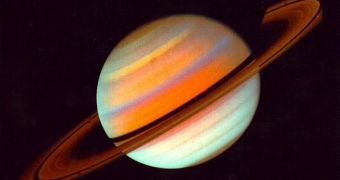Three tiny satellites are currently onboard the space shuttle Endeavour, awaiting delivery to the International Space Station (ISS), Each of the three prototypes is the approximate size of a fingernail.
Developed by experts at the Cornell University, the 1-inch spacecraft are testing technologies that could one day fly to the gas giant Saturn, and conduct studies there. The small vehicles look like square computer chips, and they will be installed on the outside of the ISS.
During Endeavour's STS-134 mission, the six-astronaut crew will carry out a series of four extravehicular activities (EVA). During the sorties, they will install the $2 billion Alpha Magnetic Spectrometer (AMS) particle detector outside the orbital lab.
But the spacewalks have other objectives too. These include installing a new S-band communications antenna, delivering robotic spare parts to specialized cargo holds, and so on. During one of the EVA, astronauts will also install the small Sprite satellites on the outer hull of the ISS.
Once activated, they will start conducting measurements of solar radiation and other related parameters. At this point, their constructors say, the spacecraft are scheduled to remain in space for several years, before finally returning to Earth.
They will most likely be brought back home aboard a Soyuz space capsule. The return vehicle depends on the performances and progress of private space companies that NASA is currently funding to develop replacement vehicles for the space shuttles.
When they get back the satellites, the Cornell investigators will analyze them, in order to figure out what effects prolonged exposure to space had on the devices, Daily Galaxy reports.
“Their small size allows them to travel like space dust. Blown by solar winds, they can sail to distant locations without fuel,” explains Cornell expert Mason Peck, who is an associate professor of mechanical and aerospace engineering at the university.
“We're actually trying to create a new capability and build it from the ground up. We want to learn what's the bare minimum we can design for communication from space,” he goes on to say.
Endeavour is currently carrying out its final mission ever, manned by a crew of six astronauts. It will spend a total of 16 days in space, before returning home to Earth and entering the decommissioning procedure.

 14 DAY TRIAL //
14 DAY TRIAL //